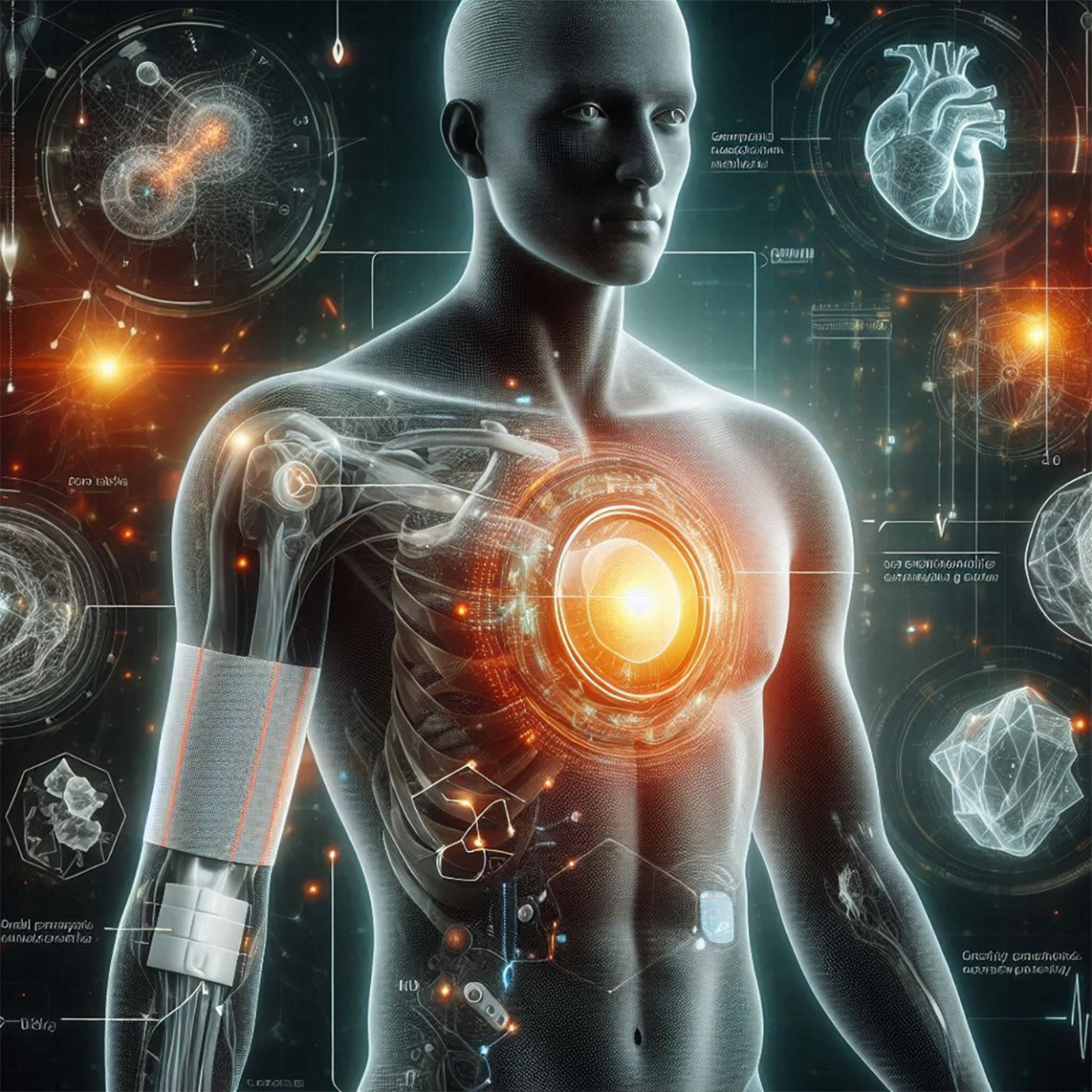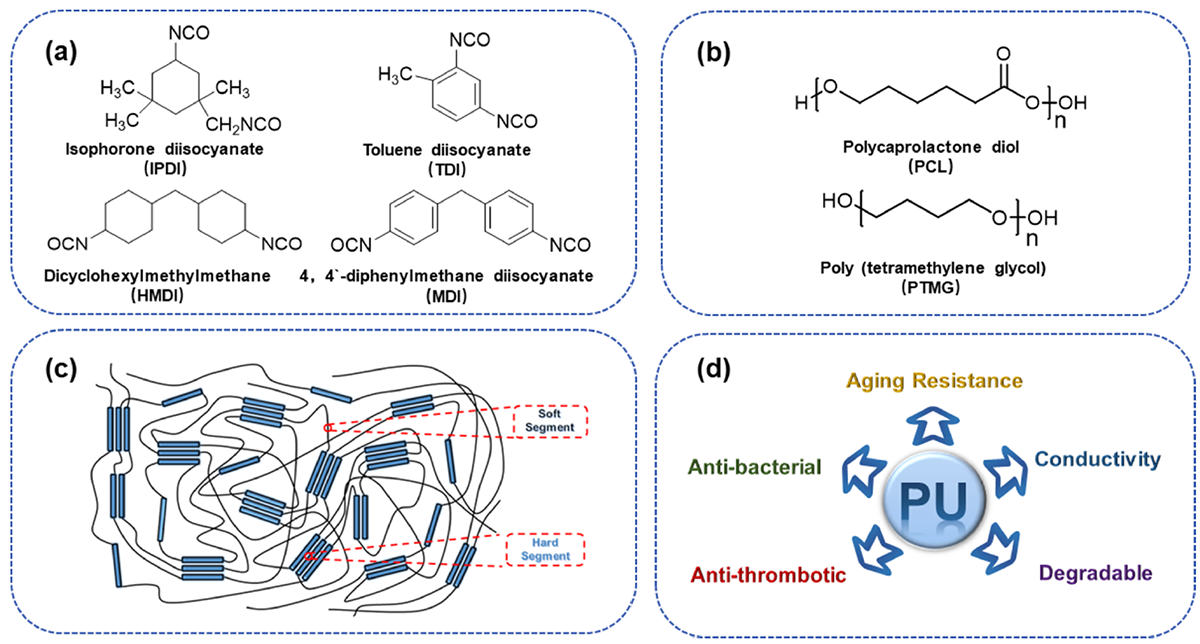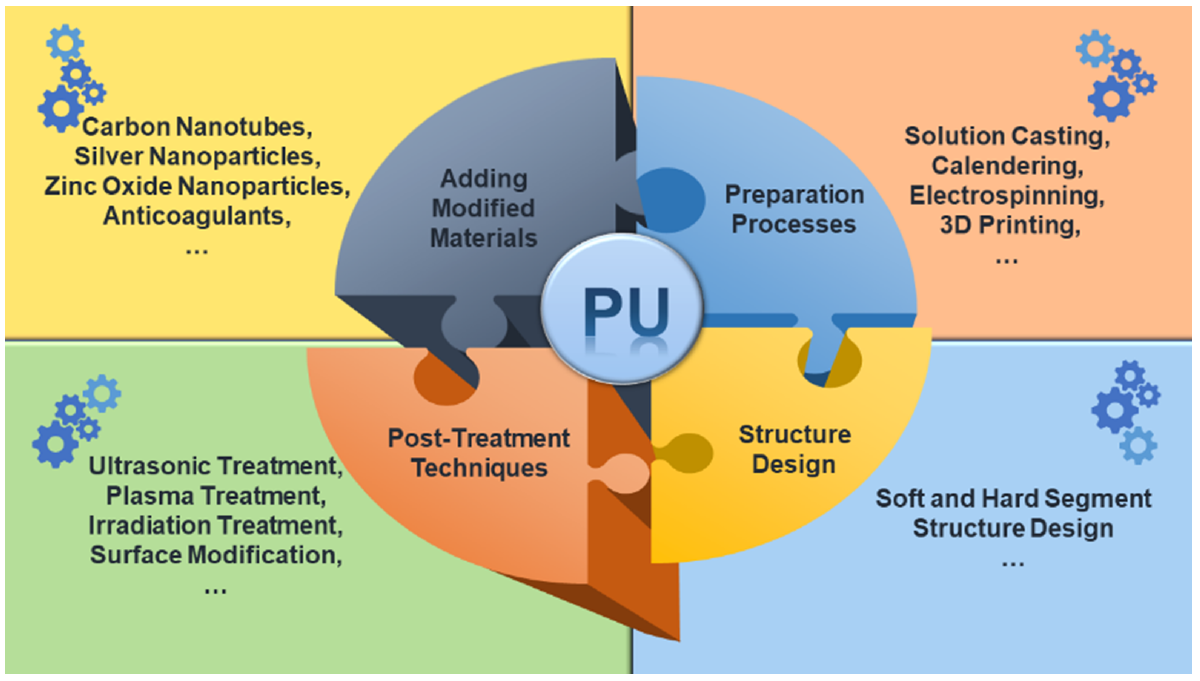Polyurethane (PU): Latest Biomedical Applications

Polyurethane (PU) is a highly adaptable polymer recognized in the biomedical field. Its ability to be tailored by adjusting its soft and hard segments grants it superior mechanical strength and biocompatibility.
Let’s delve into the latest developments and applications of PU in wound dressings, flexible skin sensors, orthopedics, and cardiovascular devices.
You can also read: Silent Polyurethane Tires for Electric Vehicles
PU Wound Dressings
Polyurethane (PU)’s superior mechanical properties and biocompatibility make it an ideal material for wound dressings. Recent advancements have focused on enhancing its antibacterial and healing properties. PU dressings can prevent infections by incorporating antimicrobial agents such as silver nanoparticles and zinc oxide. Additionally, the development of bio-based PU has introduced biodegradable wound dressings, which minimize environmental impact and reduce the risk of adverse reactions in patients. Future research aims to create multifunctional dressings that combine sterilization with real-time monitoring capabilities, offering therapeutic and diagnostic benefits.

a. Four common types of isocyanates, b. Common oligomeric polyols, c. Microphase separation structure of PU, d. Functional design directions for medical PU. Courtesy Resources Chemicals and Materials, Copyright (2023).
Polyurethane Flexible Skin Sensors
The development of flexible skin sensors is revolutionizing wearable health monitoring devices. PU’s flexibility, durability, and biocompatibility are crucial for creating sensors that can conform to the skin’s contours and provide accurate readings. By integrating conductive materials like carbon nanotubes and metallic nanowires, PU-based sensors can monitor various physiological parameters such as temperature, moisture, and electrical activity. These sensors have potential applications in continuous health monitoring, sports performance tracking, and early disease detection. Advances in 3D printing technology enable the production of exact and customizable sensors, enhancing their functionality and user comfort.
You can also read: Antibacterial Polymers: Advancing in Public Health.
PU in Orthopedics
In orthopedics, practitioners develop implants and prosthetics using PU because of its mechanical strength and compatibility with human tissue. Moreover, PU-based materials provide significant advantages in load-bearing applications, including joint replacements and bone scaffolds.. Researchers are exploring the use of bio-based PU to create biodegradable orthopedic devices that support bone regeneration and gradually degrade as new tissue forms. This approach reduces the need for secondary surgeries to remove implants. Additionally, the incorporation of nanomaterials and reinforcing agents aims to improve the mechanical properties and longevity of orthopedic devices, making them more effective for long-term use.
Cardiovascular PU Applications

Methods for functionalizing PU materials. Courtesy Resources Chemicals and Materials, , Copyright (2023).
PU’s versatility extends to cardiovascular applications, where it is used to fabricate vascular grafts, heart valves, and stents. Its excellent biocompatibility and mechanical properties make PU suitable for withstanding the dynamic environment of the cardiovascular system. Recent innovations focus on developing PU materials with enhanced antithrombotic properties to prevent blood clot formation. By adding natural anticoagulants and antiplatelet agents, PU-based cardiovascular devices can reduce the risk of complications. Furthermore, the advent of bio-based PU introduces biodegradable options that can safely degrade within the body, offering a promising alternative to traditional synthetic materials.
Conclusions and Future Directions
The advancements in PU technology are significantly impacting the biomedical field, particularly in wound dressings, flexible skin sensors, orthopedics, and cardiovascular applications. Future research aims to enhance the multifunctionality and biocompatibility of PU-based materials while addressing challenges related to stability and degradation. The integration of 3D printing technology is anticipated to play a key role in producing customized and high-precision biomedical devices. Furthermore, as healthcare demands increase, researchers will continue to develop cost-effective, sustainable, and high-performance PU materials, promising a bright future for their applications in medicine.
To read more: Resources Chemicals and Materials (keaipublishing.com)
